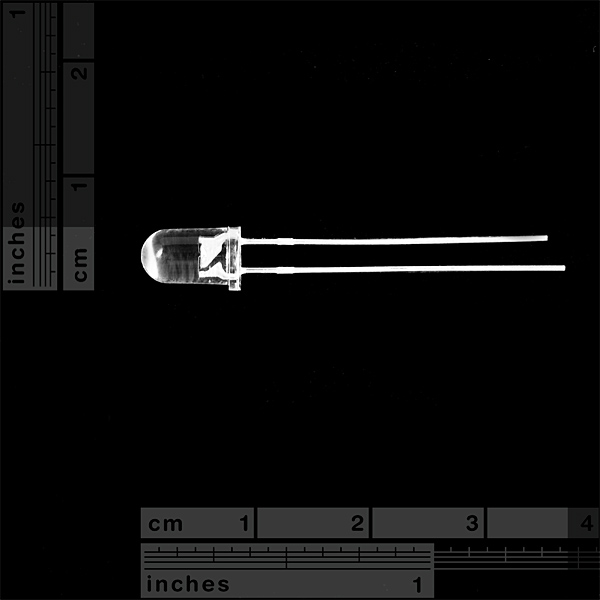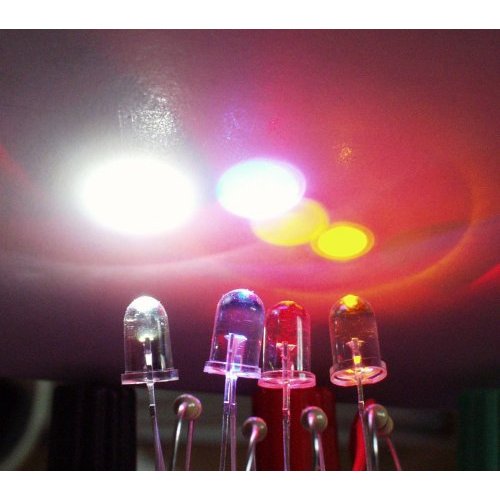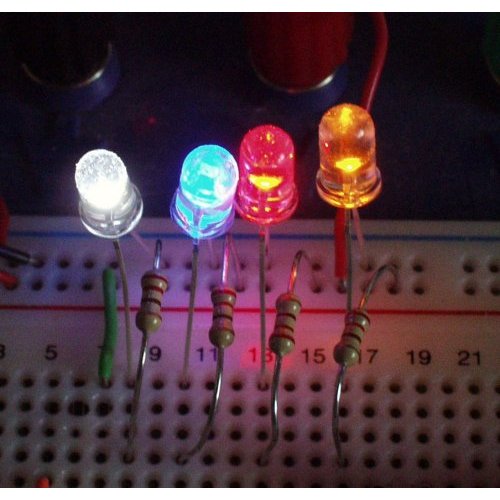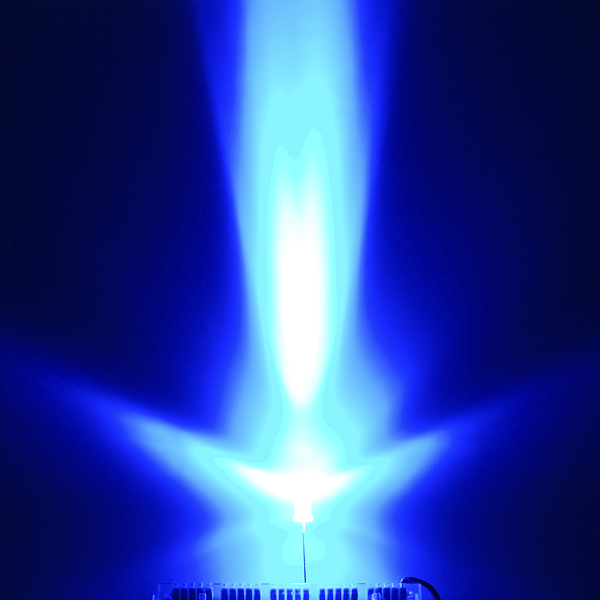These are very bright LEDs. The LEDs are so bright that it hurts to look directly at them. Please take a look at the pictures to get an idea of the intensity. All lenses are clear.
- Standard size - T1 3/4 5mm
- 4,000mcd brightness
- 3.4V forward drop
- Max current 20mA
LED - Super Bright Blue Product Help and Resources
Wireless Glove Controller
April 24, 2019
Build a wireless glove controller with Arduinos to trigger an LED using XBees!
Core Skill: Electrical Prototyping
If it requires power, you need to know how much, what all the pins do, and how to hook it up. You may need to reference datasheets, schematics, and know the ins and outs of electronics.
Skill Level: Rookie - You may be required to know a bit more about the component, such as orientation, or how to hook it up, in addition to power requirements. You will need to understand polarized components.
See all skill levels
Comments
Looking for answers to technical questions?
We welcome your comments and suggestions below. However, if you are looking for solutions to technical questions please see our Technical Assistance page.
Customer Reviews
No reviews yet.







Great LEDs, I used them for my science project. I was trying to figure out which part of the visible light spectrum was best for growing plants, and these did the trick. I found that the blue worked the best. My only complaint, though, is that they are clear, and don't come with any description out of the box, which means you cannot immediatley identify what color they are out of the package. You have to light them up, and then organize them. No biggie though. Great LEDs and very bright when running off 3.6 volts. Also very energy efficient, I had 8 of these running off of two AA for a grand total of over 200 hours, and did not drain the battery very much.
I believe that these are 10,000 mcd, I have all of the other colors of the bright LEDs and they looked about the same brightness.
i was wondering if you had any information on your project as i am very interested in the subject. thank you in advance for anything you can provide.
t.
Such a pretty picture....
So I have a noob question, how could I run 4 of these LEDs on a 9V battery (resisters etc.) and please share how you got your answer so I can learn :)
The easy way (also good for double-checking your own work) is to use a calculator like this one: http://led.linear1.org/led.wiz.
But you can also do it by hand; for a series string you'll add up the voltage drop(s) across the LEDs (this is found in the datasheet), subtract that from the source voltage, and use Ohm's law on the remaining voltage to figure out the current-limiting resistor value. It gets more complicated with parallel and series+parallel, and with a little experience you can often rearrange things to reduce the dissipation in the resistor(s) which will make your circuit more efficient. Googling "calculate LED resistor" or looking at good EE textbook will give you the background you need. Have fun!
are these brighter then the super bright 10 mm LEDS that cost $1.50?
These are 4000 mcd 10° and the 10mm ones are 9000 mcd 30°. So these are less than half the brightness.
Why does it say these are 4,000 mcd when the others are 10,000 mcd and they all have the same beam angle and ratings?
Never mind i realized that mcd is a measure of percieved brightness, not actual, so the green would actually be rated 12,000 mcd since the eye is more sensitive to green than any other color.